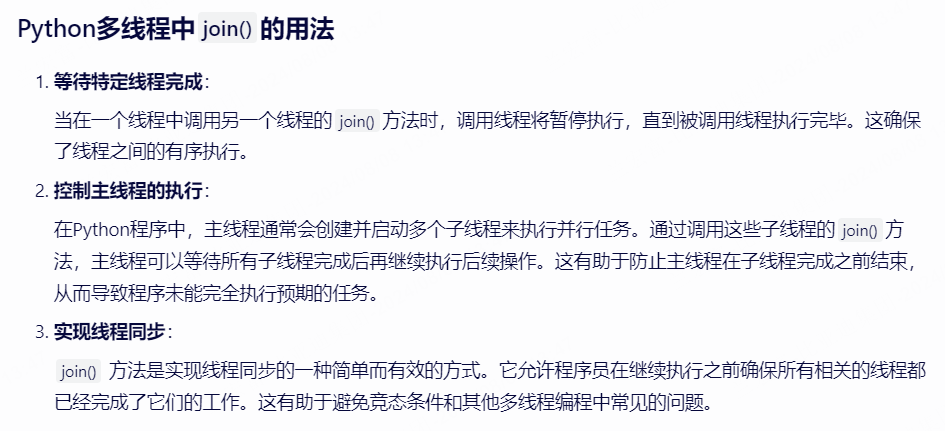理解Python多线程中的join()用法
文心一言中的解释

代码例子1
import threading
import time
def foo():
time.sleep(3)
print("我创建的线程结束了")
thread1 = threading.Thread(target=foo)
thread1.start()
# thread1.join()
print("主线程结束了")
输出:
主线程结束了
我创建的线程结束了
Process finished with exit code 0
代码例子2
import threading
import time
def foo():
time.sleep(3)
print("我创建的线程结束了")
thread1 = threading.Thread(target=foo)
thread1.start()
thread1.join()
print("主线程结束了")
输出:
我创建的线程结束了
主线程结束了
Process finished with exit code 0
解释
print("主线程结束了")是主线程的一个函数,按理来说,我手动创建的线程会sleep3秒,但是print("主线程结束了")不需要运行3秒而是瞬间执行完毕,所以此时会输出
主线程结束了
我创建的线程结束了
如果让主线程等我创建的线程结束再运行,那么控制台就会等待3秒,然后输出我创建的线程结束了,接着再输出主线程结束了
我创建的线程结束了
主线程结束了




【推荐】国内首个AI IDE,深度理解中文开发场景,立即下载体验Trae
【推荐】编程新体验,更懂你的AI,立即体验豆包MarsCode编程助手
【推荐】抖音旗下AI助手豆包,你的智能百科全书,全免费不限次数
【推荐】轻量又高性能的 SSH 工具 IShell:AI 加持,快人一步
· 分享一个免费、快速、无限量使用的满血 DeepSeek R1 模型,支持深度思考和联网搜索!
· 基于 Docker 搭建 FRP 内网穿透开源项目(很简单哒)
· ollama系列01:轻松3步本地部署deepseek,普通电脑可用
· 25岁的心里话
· 按钮权限的设计及实现
2021-08-08 查看并修改jenkins的端口号(windows系统)